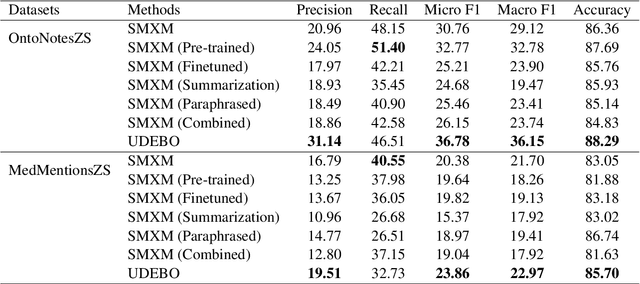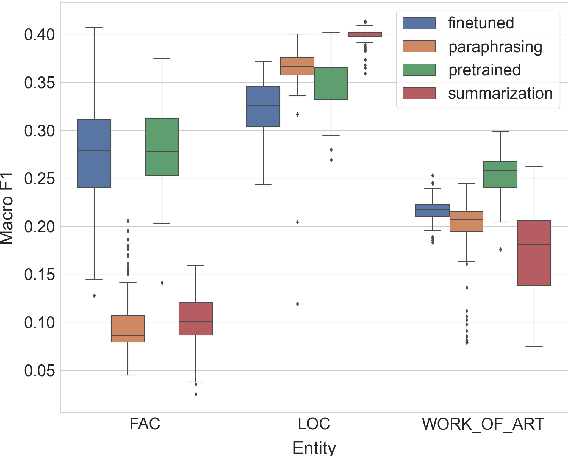Leopold Fuchs
Description Boosting for Zero-Shot Entity and Relation Classification
Jun 04, 2024



Abstract:Zero-shot entity and relation classification models leverage available external information of unseen classes -- e.g., textual descriptions -- to annotate input text data. Thanks to the minimum data requirement, Zero-Shot Learning (ZSL) methods have high value in practice, especially in applications where labeled data is scarce. Even though recent research in ZSL has demonstrated significant results, our analysis reveals that those methods are sensitive to provided textual descriptions of entities (or relations). Even a minor modification of descriptions can lead to a change in the decision boundary between entity (or relation) classes. In this paper, we formally define the problem of identifying effective descriptions for zero shot inference. We propose a strategy for generating variations of an initial description, a heuristic for ranking them and an ensemble method capable of boosting the predictions of zero-shot models through description enhancement. Empirical results on four different entity and relation classification datasets show that our proposed method outperform existing approaches and achieve new SOTA results on these datasets under the ZSL settings. The source code of the proposed solutions and the evaluation framework are open-sourced.
Zshot: An Open-source Framework for Zero-Shot Named Entity Recognition and Relation Extraction
Jul 25, 2023Abstract:The Zero-Shot Learning (ZSL) task pertains to the identification of entities or relations in texts that were not seen during training. ZSL has emerged as a critical research area due to the scarcity of labeled data in specific domains, and its applications have grown significantly in recent years. With the advent of large pretrained language models, several novel methods have been proposed, resulting in substantial improvements in ZSL performance. There is a growing demand, both in the research community and industry, for a comprehensive ZSL framework that facilitates the development and accessibility of the latest methods and pretrained models.In this study, we propose a novel ZSL framework called Zshot that aims to address the aforementioned challenges. Our primary objective is to provide a platform that allows researchers to compare different state-of-the-art ZSL methods with standard benchmark datasets. Additionally, we have designed our framework to support the industry with readily available APIs for production under the standard SpaCy NLP pipeline. Our API is extendible and evaluable, moreover, we include numerous enhancements such as boosting the accuracy with pipeline ensembling and visualization utilities available as a SpaCy extension.
* Accepted at ACL 2023
 Add to Chrome
Add to Chrome Add to Firefox
Add to Firefox Add to Edge
Add to Edge